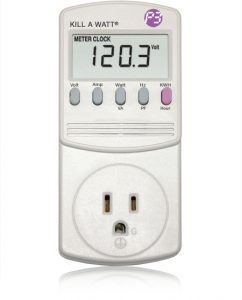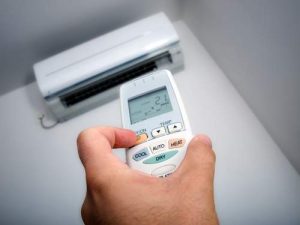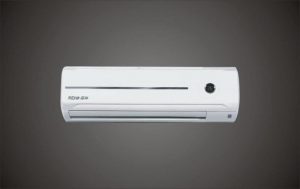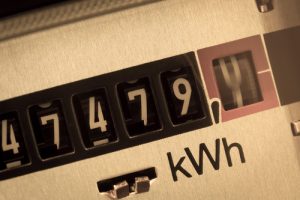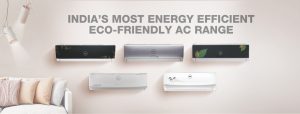Power Saver Devices for Air Conditioners
- Power Saver Device based on Capacitor Banks
- Air Conditioner Power Savers based on Thermal Saturation Point
- What’s the role of Thermostat then?
- How much electricity can this device save?
- What about invertor technology air conditioners?
- What’s the cost and payback of such devices?
- Conclusion
- Air Conditioner Power Savers available on Amazon:
One of the frequently asked question that we get on our website is: “Is there something that I can put on my Air Conditioner that can reduce its electricity consumption? There are power savers available for Air Conditioners in the market, are they genuine and is it legal to use them?” There are multiple types of power saver devices available in the market, and it is very important to figure out if you need one and if you do, which is the right one. Most of these devices are legal to use but it is important to understand the impacts and limitations of each of them. In this article we will cover two of these that are known to us and will add on if we discover more.
- Power Saver Device based on Capacitor Banks
- Air Conditioner Power Savers based on Thermal Saturation Point
- What’s the role of Thermostat then?
- How much electricity can this device save?
- What about invertor technology air conditioners?
- What’s the cost and payback of such devices?
- Conclusion
- Air Conditioner Power Savers available on Amazon:
Power Saver Device based on Capacitor Banks
The most commonly available power saver device that claim to work on all kind of appliances (not just air conditioners), or in general on the whole of your setup are based on Capacitor Banks. The basic theory behind it is that it corrects power factor that increases/decreases the system “demand”. As we have discussed on this in our previous articles: “Power Saver Devices or Capacitor Banks – do they really save electricity?” and “What is Power Factor correction and how MDI (Maximum Demand Indicator) penalty can be avoided”, these devices are a must have if you have a commercial/industrial connection, but will not give much benefit if you are looking to use it for residential connection. So if you are thinking of using such device for air conditioners at home, please avoid it. Please note: these devices are absolutely legal to use and no one can fine you for its use. In fact for commercial/industrial connections, distribution companies provide incentives to use them.
Air Conditioner Power Savers based on Thermal Saturation Point
We at Bijli Bachao have always emphasized on right sizing of Air Conditioners. Under-sized ACs do not cool properly, whereas oversized air conditioners cannot remove humidity at the desired level and may consume more electricity. Although these days’ people have an option of buying Inverter Technology Air Conditioners that are auto-adjusting air conditioners and can cool right as well as use the right amount of electricity, but most air conditioners sold in the market currently are still fixed tonnage (size) air conditioners. All air conditioners are sized keeping the hottest day in mind, even though they may be used across seasons and at varied temperatures. And thus during most of the days, the air conditioners are oversized (slightly to extremely).
What does oversizing actually mean? An air conditioner works by compressing and condensing refrigerant gas to a high-pressure liquid, which then moves to a low-pressure area and absorbs the heat from the air in the room to convert back into gas. In an oversized air conditioner, the heat coming from the room is not sufficient to convert low-pressure liquid to back to gas and thus it goes back in the compressor as a liquid. The electricity then used by the compressor goes waste as the refrigerant is already in liquid form.
Technically the point at which the liquid absorbs heat and still does not change to gas, neither does it change it’s temperature is called Thermal Saturation Point. The Power Savers based on Thermal Saturation Point detect occurrence of this state and switch off the compressor. This avoids wastage of electricity by the compressor.
What’s the role of Thermostat then?
We always thought that it was the job of a thermostat to switch off the compressor when the desired room temperature is attained. And this understanding is not wrong. But the problem with just relying on the thermostat is that it works by sensing just the room temperature and operates compressor based on that, but it does not consider the energy levels in the air conditioner. Post the thermal saturation point, the air conditioner already has enough stored energy to remove the heat from the room and any excess electricity used by the compressor goes waste.
How much electricity can this device save?
Well it truly depends on how much the air conditioners are oversized. There can be huge savings if your air conditioner is highly oversized, and less if your air conditioner size is optimum. Savings will also depend on the season. If your air conditioner is sized well for summers, then the savings in summer will not be a lot, but if the same air conditioner is used in other seasons as well, then in other seasons the same air conditioner will be oversized and then there will be good savings.
Although manufacturers of such power savers market 15-20% electricity savings on using these devices, but savings will depend on your air conditioner. An experiment conducted by students of IIT Bombay observed 35-40% savings on an air conditioner in their test conditions (source: http://students.iitk.ac.in/ge3/Energy%20audit.pdf). But as said above, the savings will depend on the extent of oversizing on any given day.
What about invertor technology air conditioners?
Inverter technology air conditioners are auto adjusting air conditioners that adjust to the size as required by the room. Thus these air conditioners should not have problems of oversizing and thus should not need such devices that cut off the compressors.
What’s the cost and payback of such devices?
Based on our market research we have observed that these devices cost around Rs 5000 a piece. If the cost of electricity is Rs 5 per unit, it means if the device saves 1000 units, the cost is recovered. A 1.5 ton AC consumes about 1.3-1.4 units an hour if rightly sized and at a good temperature. In case of IIT Bombay case study, the Air Conditioner was highly oversized and thus it was consuming 2.5 units in an hour and 1.3 units after using the device. Thus it was saving about a unit an hour. In such case the device will payback for itself in 1000 hours of use. But if the unit were rightly sized, then the payback would be a little longer. So it truly depends on how the AC is sized.
As a thumb rule it is assumed that if compressor starts and switches off in about 9 mins, then the AC is rightly sized. If it is shorter then the AC is oversized. (Source: http://www.energystar.gov/ia/home_improvement/home_sealing/RightSized_AirCondFS_2005.pdf).
Conclusion
Power savers based on Thermal Saturation Point control do have potential to save electricity on air conditioners. But how much of it can be saved truly depends on how much are your ACs oversized. If you are truly interested in buying one, then call for a demo from one of the manufacturers and measure for yourself before buying. Please note that the results will vary across seasons.
Air Conditioner Power Savers available on Amazon:
About the Author:
Abhishek Jain is an Alumnus of IIT Bombay with almost 10 years of experience in corporate before starting Bijli Bachao in 2012. His passion for solving problems moved him towards Energy Sector and he is keen to learn about customer behavior towards Energy and find ways to influence the same towards Sustainability. More from this author.


